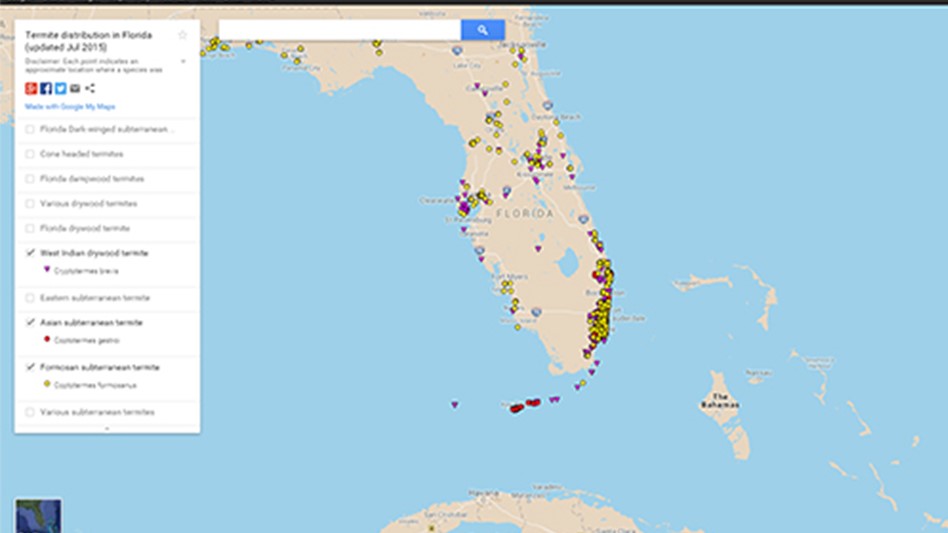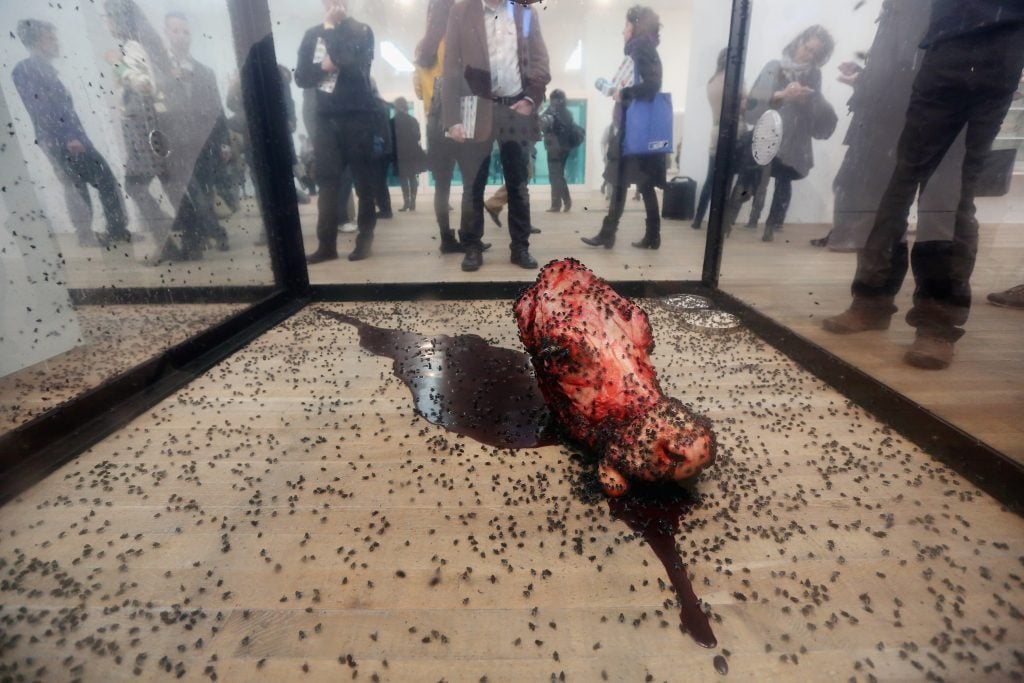Share that
items
You are free to share this article under the Attribution 4.0 International license.
To estimate how many brain cells make up the insect brain, neuroscientists made “brain soup”.
Not only does the work reveal interesting insights into how insects’ brains evolve, it also provides a more telling metric than traditional studies of measuring brain size or weight.
The surprisingly simple technique of mashing the brain into “soup” allows researchers to determine that certain species of bees have a higher density of brain cells than some species of birds, while ants have fewer brain cells than originally expected.
The study, published in the Proceedings of the Royal Society B, marks the first time the new cell counting method has been applied to invertebrates and provides a robust and reproducible protocol for other research groups studying the invertebrate brains.
For more than a century, scientists have tried to measure and compare the vertebrate brain and brain components between different species to draw conclusions about how the brain supports the behavioral and cognitive abilities and ecological demands of animals. Theories about the cognitive abilities of the animal brain, including the fossilized remains of human evolutionary ancestors, stem from such measures.
To do this, scientists need to know how many neurons make up a particular brain. Until recently, counting or estimating the number of neurons in a brain was extremely tedious and time consuming, even with computer and software based systems.
Because of this, very few reliable neuron counts have been available for animals, including the human brain. Instead, brain researchers relied on estimates and extrapolations based on measurements of brain size or mass. However, according to the authors of this study, this approach can be fraught with uncertainty and prejudice. For example, while larger animals tend to have larger brains than smaller animals, the volume and mass of a given brain alone doesn’t say much about its cognitive abilities.
“How big or how heavy a brain is doesn’t give you the best measure of an animal’s cognitive abilities,” says lead author of the study, R. Keating Godfrey, a postdoctoral fellow in the Department of Molecular and Cell Biology.
“Bird brain” is a compliment
One main reason is that the size of a brain is less relevant to its processing capabilities compared to the number of neurons or nerve cells it contains. This is analogous to the computing power of a computer, which has little to do with the physical size of its central processor. Neurons are highly specialized cell types that are found in virtually all species throughout the animal kingdom.
For example, compare the sea hare – a giant sea slug found off the California coast that can weigh more than 12 pounds – with the fruit fly Drosophila. The sea snail’s brain alone dwarfs the entire fly many times over, but has only 18,000 neurons, far fewer than the approximately 100,000 of the fly.
“Just because one species’ brain can be ten times larger than another, doesn’t mean it has ten times as many neurons,” says senior author Wulfila Gronenberg, professor of neuroscience who heads a research group in the neuroscience division is devoted to deciphering the neuroscience secrets of the insect brain.
While “bird brain” is often used as a derogatory term for lack of intelligence, it’s actually a misnomer, says Gronenberg.
“Avian brains have many more neurons than a typical mammal of comparable size,” he says. “Birds have to navigate three-dimensional space in flight. In order to pack all this computing power into a small, lightweight package, their neurons are smaller and more densely packed.”
“Social Brain” Hypothesis
Gronenberg’s research group is interested in the neural basis of insects that live in social communities such as honey bees or many wasps.
“We wanted to know: does the brain of social insects have anything special?” Godfrey says.
In particular, she and her colleagues wanted to investigate whether the “social brain” hypothesis, which was developed for vertebrates and posits that the size of a brain or a specific brain region correlates with the size of the social group and the behavior of the group, also holds true Insects.
With the help of students, Godfrey worked to adapt a technique developed in 2005 by Brazilian neuroscientist Suzanna Herculano-Houzel that revolutionized vertebrate neuroscience to the brain of insects. Instead of cutting the brain into hundreds or thousands of thin sections and counting the neurons in each section, the procedure only requires that the brain tissue be homogenized. That is scientifically speaking for “mixed”, which results in a brain soup.
“We release the nuclei from the cells so we can count them,” says Godfrey. “Vertebrates have special brain regions and structures that you can take samples from, but with insects we can only really crush the whole thing. So we get a neuron density for the whole brain. “
Godfrey and her co-authors compared the number of brain cells to the body sizes of a variety of Hymenopterans – bees, wasps, and ants – and found that the relationships between neuron number and brain size are very similar to those in vertebrates.
Numerous bee neurons
Certain bees, the team reports, have particularly high numbers of neurons, which should stimulate re-exploration of their behavioral capacities, and ants generally have fewer neurons than their wasp and bee relatives, probably because they don’t fly and therefore need less brain power for them visual processing and flight control.
It found that some bees have even higher brain cell densities than some of the most compact brains of birds and mammals. For example, the metallic green sweat bee, which is common in the southwest and belongs to the genus Augochlorella, has a particularly high number of neurons for its brain size: about 2 million per milligram, more than the highest neuron densities in the smallest vertebrate species – rough shrews in mammals and Gold combs in birds.
Ants, on the other hand, tended to kick in at the lower end of the spectrum. Compared to bees and wasps, ants had a small brain and relatively few brain cells. One species of ant common in Arizona that harvests in the desert was only 400,000 cells per milligram of brain mass. If you consider that this ant’s brain weighs less than 1 milligram, this animal can get by with a total of around 90,000 brain cells, estimates Gronenberg.
“We believe this has to do with the ability to fly, which is less about intelligence than about processing information,” he says. “Ants rely on scent information, while bees rely more on visual information.”
Which insect brains are the smallest?
These results raise the question of how many brain cells nature needs to form a functioning brain. Invertebrate brains usually have highly specialized neurons, each performing a specific task, according to the study’s authors, which allows them to perform tasks with a small brain and a small number of neurons.
Gronenberg refers to the tiny fairy wasp as a strong contender for the “Smallest brain in the insect world” award. Three strands of human hair lying next to each other cover the body length of the tiny creature, whose brain consists of fewer than 10,000 neurons.
“However, this parasitic wasp can do anything to survive,” says Gronenberg.
“It can find a host, it can mate, it can lay eggs, it can run, and it can fly,” he says. “While a small insect may have only one or a few neurons to perform a certain function, humans and other vertebrates typically have many thousands or even tens of thousands of these specialized neurons devoted to a task that enables us to do things do more accurately and in a more refined way. “
The National Science Foundation and the University’s Graduate Interdisciplinary Program supported the work.
Source: University of Arizona









